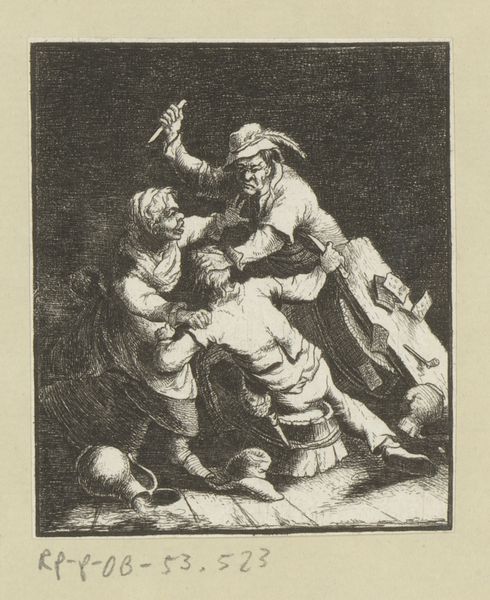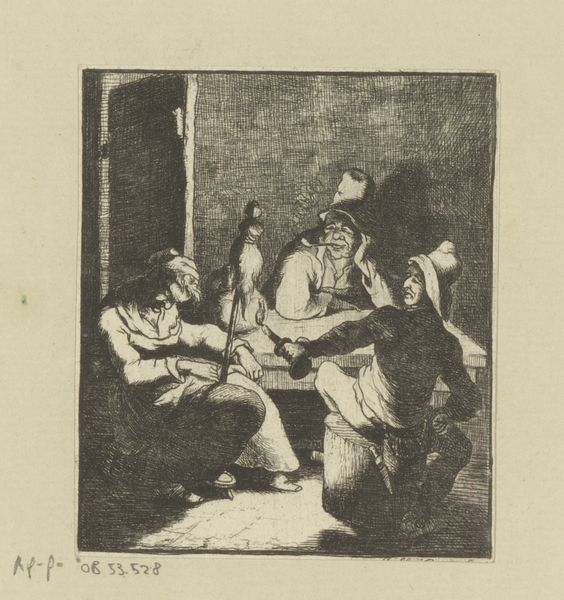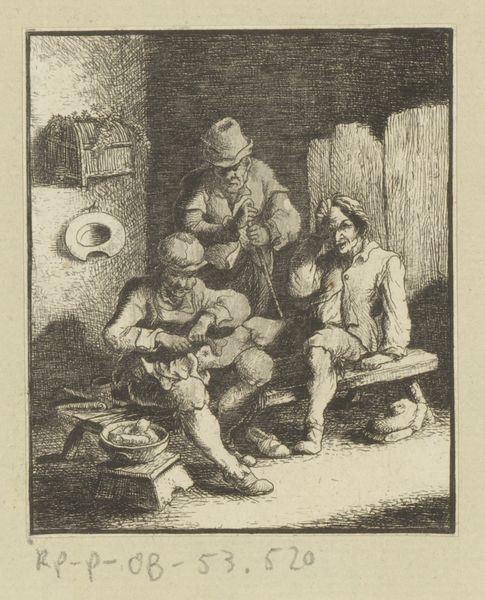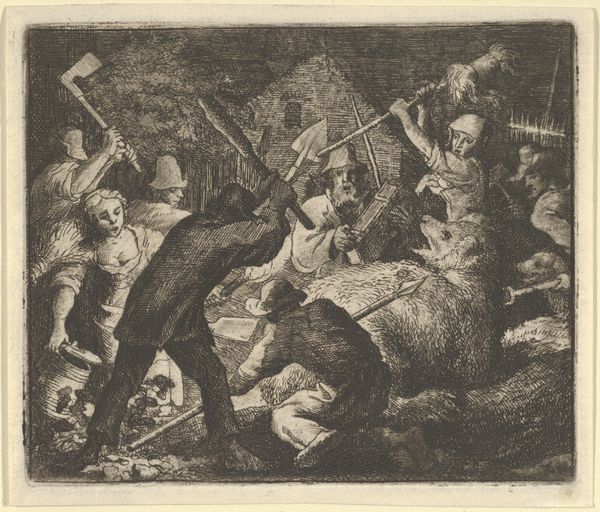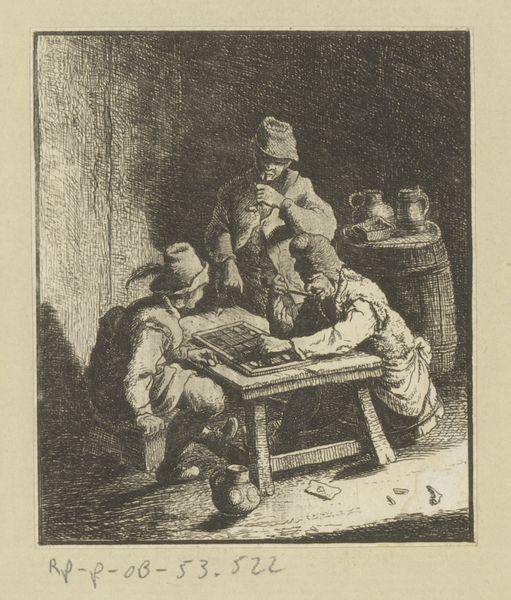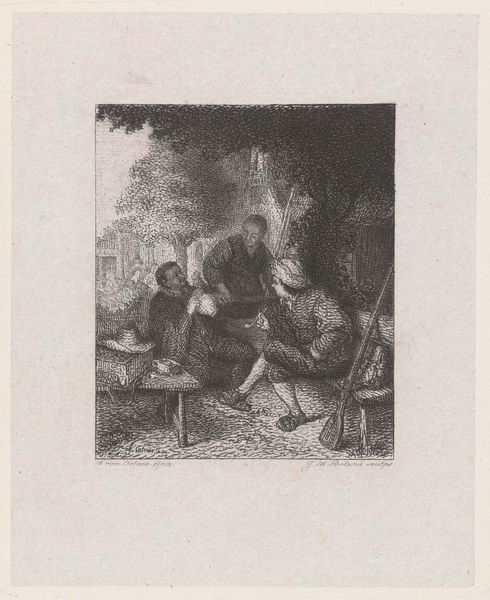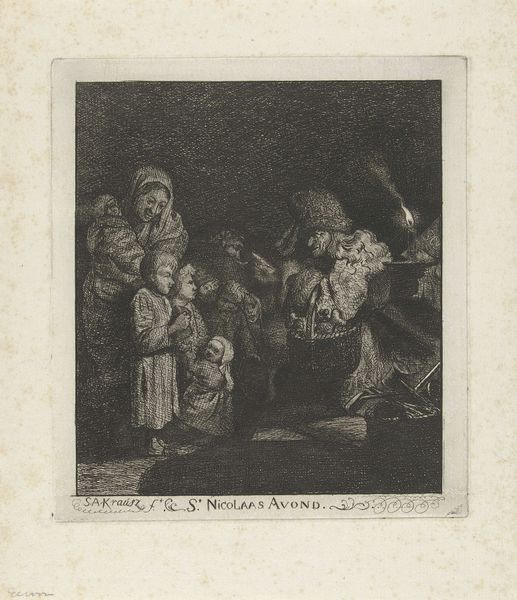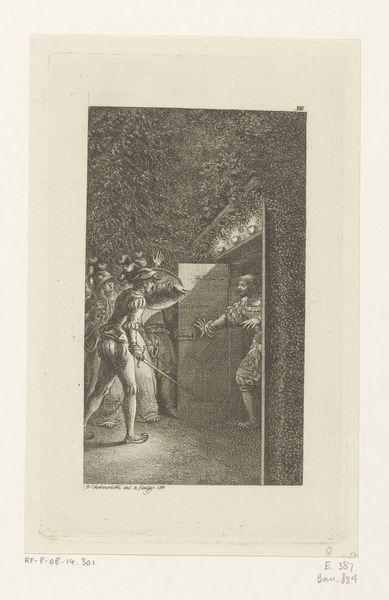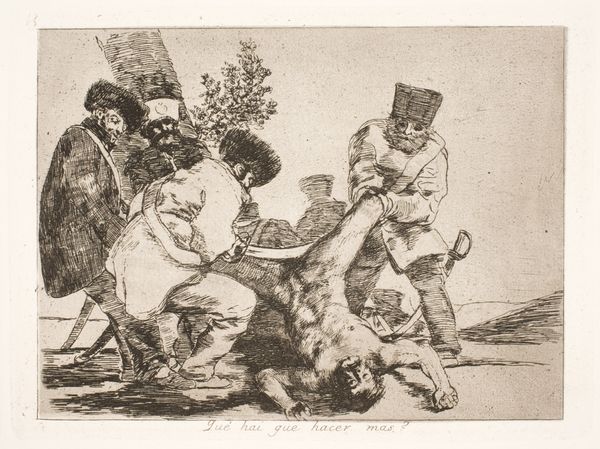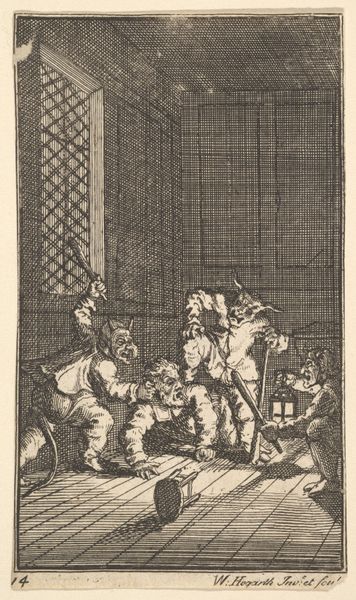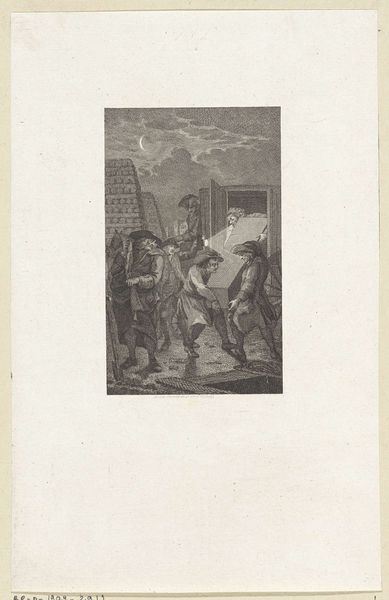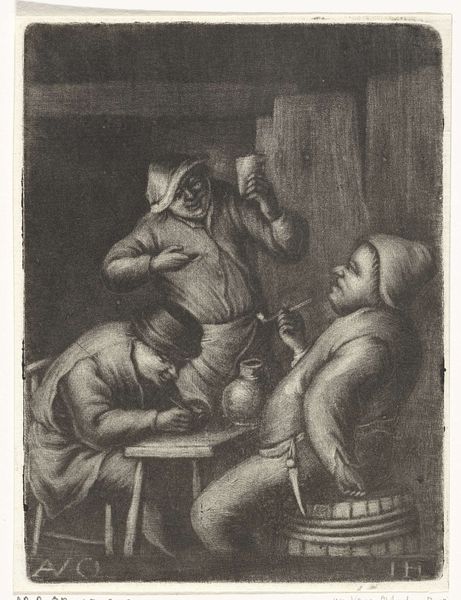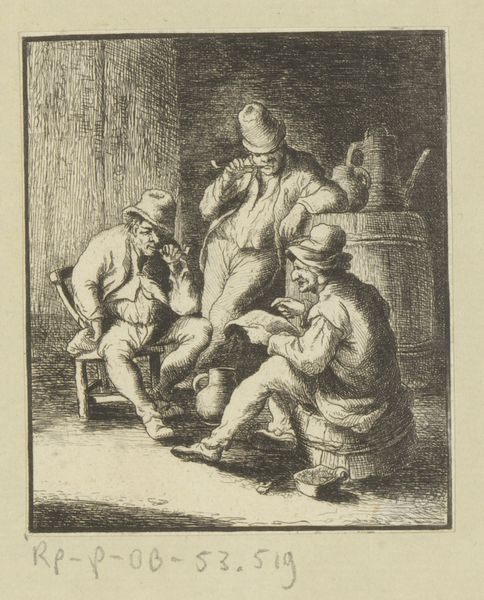
Dimensions: height 94 mm, width 80 mm
Copyright: Rijks Museum: Open Domain
Curator: Ah, yes, this engraving by Johann Andreas Benjamin Nothnagel, likely created sometime between 1739 and 1804, titled "Drie drinkende mannen", or "Three Drinking Men." The artwork shows three men drinking in what appears to be a tavern or other type of gathering place. Editor: It feels raucous. There is something deeply unsettling about the joy on their faces as they indulge. And it's interesting how the artist uses such rough lines to depict the scene; the effect seems both satirical and perhaps slightly menacing, actually. What kind of deeper meaning are we supposed to draw from it? Curator: Well, drinking scenes were a very popular subject, often connected to social commentary. You see here the artist is exploring a long tradition, going back to antiquity, that uses intoxication as a mirror to human folly, sometimes as simple moral warnings against overindulgence, or on the other hand to suggest release from inhibition and social conventions. Editor: Do you think the intent here is a cautionary tale, then? It strikes me as less about morals and more about societal roles—the idea of commoners seeking camaraderie or escape. We see them frozen in time, and the visual metaphor raises issues of class and leisure, don't you think? Are we supposed to look down on them? Pity them? Are we meant to identify with them? Curator: Interesting points, particularly regarding the interplay between moral judgment and class consciousness. Looking at it from the symbolist’s point of view, though, it is interesting how the tankard held high by one man isn’t just a symbol of their merry-making, it also feels like a vessel—literally holding both celebration and perhaps also obliviousness. The image’s value comes not only from depicting daily life of a social class, but the psychological portrayal of people reveling in the moment, despite their social standing. Editor: Perhaps, but I am concerned about romanticizing their conditions through idealized visual rhetoric. I keep wondering: what were the social realities of 18th-century working-class people in taverns? What freedoms, or oppressions, are not immediately obvious in this representation? Curator: These are really important questions, it highlights how art and interpretation must go hand in hand! Editor: Indeed, it invites a very modern reading. It certainly makes you wonder about those unspoken dialogues—both in the scene itself, and between the artist and his intended audience.
Comments
No comments
Be the first to comment and join the conversation on the ultimate creative platform.
